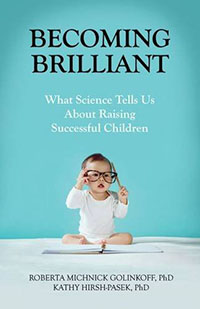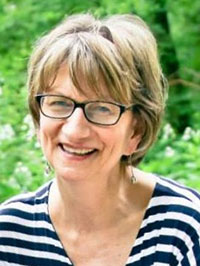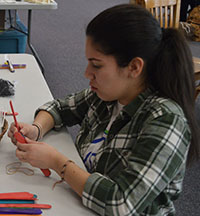At East Lee Campus, you’ll find students participating in a mock trial with a local mayor as judge, presenting marketing plans for a school store to area business owners, and discussing the “modern technological revolution” and possible impacts of technology on the future workforce. Part of Godfrey-Lee Public Schools, this program is an alternative high school with 110 ninth through 12th-graders.
“This school is the first time I’ve done this,” senior Quavion Woods said, about using skills like creativity, collaboration and critical thinking to present a plan for a school store last spring. This occurred during a competition in the style of the TV show “Shark Tank.” His team won. “I had to step up a little. I wasn’t used to being a leader.”
Quavion said he sees how the project will benefit him in the future. Getting to know people by working with them was valuable. “I learned from that. If I want to go into business or something I know I will have a good experience from this.”

Teacher Justin Noordhoek uses project-based learning in his economics/English and world history/English hybrid courses, which involves teaching students to use six skills that all start with the letter C. Educating students using the lens of the “6Cs” is an approach being embraced districtwide as teachers and administrators study a book called “Becoming Brilliant,” by psychologists Kathy Hirsh-Pasek and Roberta Michnick Golinkoff, as a main resource on how to teach students best. These authors say brilliance is not defined by a single test score but by the development of skills that serve as a foundation for learning. Here is a Q and A with the authors in Psychology Today.
Hirsh-Pasek, author of several books and hundreds of publications. is the Stanley and Debra Lefkowitz Faculty Fellow in the Department of Psychology at Temple University and a Senior Fellow at the Brookings Institution. Her book,” “Einstein Never Used Flashcards: How Children Really Learn and Why They Need to Play More and Memorize Less,” won the prestigious Books for Better Life Award as the best psychology book in 2003. Golinkoff is the Unidel H. Rodney Sharp Professor of Education, Psychology, and Linguistics and Cognitive Science at the University of Delaware and director of the Child’s Play, Learning, and Development laboratory.
“Becoming Brilliant” explains how the “6Cs” are vital for success in future careers. They include collaboration, communication, critical thinking, creative innovation and confidence. Development of these skills improves the way students learn the sixth C that usually gets the most attention: content.
“This shouldn’t be an alternative method of teaching, it should be the method of teaching,” Noordhoek said.
 All C’s are Equal
All C’s are Equal
There’s research that shows he’s right. Educators, looking beyond test results, are wondering, what is brilliance and how can it be cultivated?
Turns out, brain development involves much more than may come to mind. The book uses thousands of research papers to back up the 6Cs approach,and that intelligence is not a singular entity. Real learning embraces the 6Cs and the environments that foster real learning, the authors state. Although there are many wonderful schools and teachers trying to encourage the breadth of skills that children need, high-stakes tests really limit what they can do.
The district’s goal is to educate “the whole child,” meaning going deeper than test scores in assessing student learning from preschool through graduation, said Godfrey-Lee Assistant Superintendent Carol Lautenbach. Teachers have already embraced the idea with initiatives like Day of Play, when students spend a whole school day in self-guided play; a STEAM Maker Day, where students played with gadgets and tinkered with design; and by opening an outdoor learning center with ample opportunities to bring class outside.
But no C is less or greater than another, Lautenbach said, stressing that they are ditching the hierarchy that puts less traditional skills on the back burner. The Board of Education adopted a Learner Profile in May that gives all C’s the same strength.
“Sometimes (educators) take skills outside of the content and we call them soft skills or 21st century skills,” Lautenbach said. “But these are all equal parts of becoming successful.”
Lautenbach said Godfrey-Lee is the perfect place for the initiative. She hopes to see teachers discovering students’ interests and helping them take off in learning about those things in different ways. “That takes a really skilled teacher, and we have them.”
It’s instruction that goes deeper than learning information for a test.
“It goes to the ‘why?’” she said. “Why do we teach math? We don’t teach math so you can do math. We teach math so you can do something with math. It will switch the way we instruct.”

Brilliant Minds Work Together
Administrators contacted Hirsh-Pasek last year with the idea of using the book, written for parents, in an educational setting. Hirsh-Pasek plans to lead some professional development in the district later this school year.
Teaching should match how children learn best and most happily, through exploration and discovery, Hirsh-Pasek said in a phone interview. They should pursue and dig deeper into individual interests, developing a love for learning.
She named several ideas that promote the 6Cs: creating collaborative art murals that require communication, creativity and planning; learning how to find fact-based evidence and apply it to take a stance on issues like climate change; hosting classroom debates that require research, evidence and communication skills.
Sound a little like Noordhoek’s class? “(Becoming Brilliant) really changed our focus here as a school,” he said. “We started to look at the data of how students were achieving in project-based learning courses. … We thought we really need to become a project-based learning school”– a model increasingly popular at other schools, including Kent Innovation High.

Instruction embedded with the 6Cs can make school much more meaningful, Hirsh-Pasek said. But in the education climate of high-stakes testing, schools have often been regulated to “teach to the test.”
“That has made us as a society believe success can be defined by a test score,” she said. That’s why she’s elated to work with Godfrey-Lee.
“When I see a school system willing to branch out — to use definitions of success that every parent out there would want for their children, that don’t exclude the basics but include so much more — that’s so exciting.”
CONNECT
The Book Brigade: Becoming Brilliant
Project-Based Learning at Kent Innovation High










